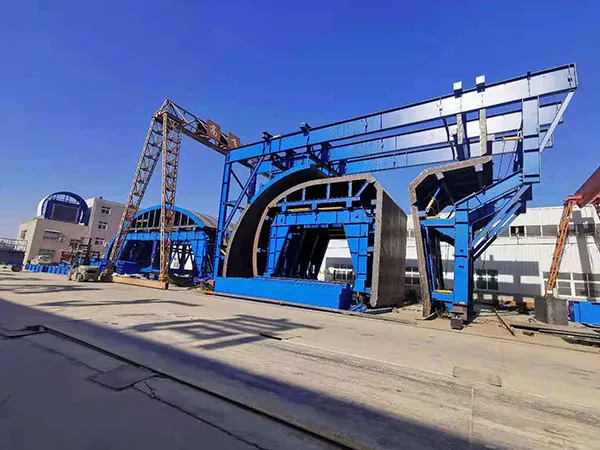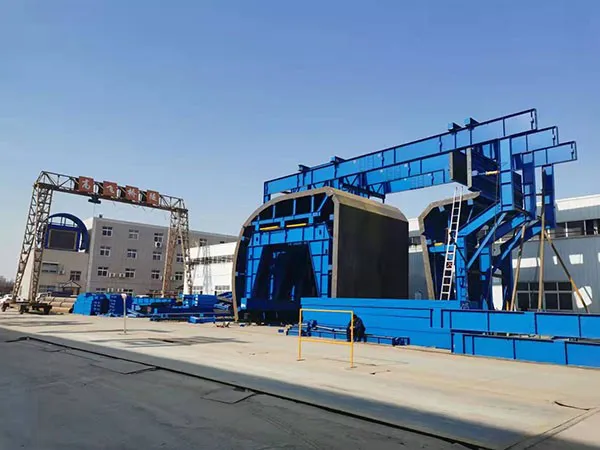In modern infrastructure construction, tunnels are not only crucial for connecting locations separated by mountains, rivers, or densely populated urban areas, but also crucial for regional economic development and transportation efficiency. As a core component of tunnel structures, the construction cost of tunnel linings has always been a key concern for project decision-makers and engineering designers. Accurately understanding the cost structure of tunnel linings per meter helps optimize budgets, optimize design solutions, and improve overall project efficiency.
Tunnel lining refers to the structural layer constructed within the tunnel after excavation. Its main functions include:
Supporting surrounding rock: Resisting ground pressure, preventing collapse or deformation, and ensuring tunnel safety and stability.
Waterproofing and drainage: Preventing groundwater infiltration and draining it through drainage systems, protecting the tunnel structure and operational environment.
Aesthetics and functionality: Providing a smooth interior wall facilitates the installation of lighting, ventilation, pipelines, and other facilities, while also enhancing the tunnel's aesthetics.
Thus, lining quality directly impacts the tunnel's service life, safety, and operational functionality.

Tunnel lining costs are not fixed; they are influenced by a variety of factors. The following factors are key factors in determining cost:
1. Geological Conditions
Surrounding Rock Grade: Weak or broken surrounding rock requires thicker lining, or even a combination of primary support and secondary lining, which is more expensive. Strong, stable surrounding rock allows for simpler construction and lower costs.
Groundwater Conditions: Areas with abundant groundwater require waterstops, grouting, and drainage systems, which incur additional costs.
Special Geology: Encountering faults, expansive soils, or gas-laden areas requires additional exploration and treatment, complicating lining design and significantly increasing costs.
2. Lining Type and Material Selection
Different lining types and material selections significantly impact cost:
Shotcrete Lining: Commonly used for primary support, it offers low cost but limited bearing capacity.
Cast-in-place Concrete Lining: A common secondary lining method with high strength and durability, but complex construction procedures.
Precast Segmental Lining: Commonly used in shield tunnels, it is prefabricated in a factory and assembled on-site, allowing for faster construction, but with high prefabrication and transportation costs.
Reinforced concrete lining: Enhanced tensile strength, suitable for high-stress areas, and more expensive than ordinary concrete.
In addition, factors such as concrete grade, rebar specifications, and waterproofing material properties directly impact the cost per meter.
3. Construction Technology and Machinery
Construction methods: Different methods, such as drill-and-blast, shield tunneling, and full-face tunnel boring machine (TBM), have significantly different lining construction requirements and costs.
Degree of Mechanization: While equipment such as automated lining trolleys, concrete pumping equipment, and shotcrete spraying machines require a large initial investment, they can improve efficiency, shorten construction schedules, and ultimately reduce overall costs.
Labor Costs: Labor costs and construction difficulty vary by region and directly impact total costs.
4. Tunnel Cross-Section Size and Shape
The larger the tunnel cross-section, the more lining materials required, the greater the construction difficulty, and the higher the cost per meter. Tunnel shapes, such as circular, horseshoe, and rectangular, vary in structural loads and formwork design complexity, which also impact construction costs.
5. Material Transportation and Logistics
The transportation costs of construction materials such as cement, sand and gravel, rebar, and waterproofing membranes are affected by distance, transportation method, and the geographical conditions of the construction site. In remote or inaccessible areas, transportation costs can account for a significant proportion of total costs.
6. Environmental and Safety Requirements
Modern projects place increasingly stringent requirements on environmental protection (such as waste disposal and noise control) and construction safety (such as ventilation, dust control, and support specifications). These measures incur additional expenses and are reflected in lining costs.

Although the cost per meter of tunnel lining is constrained by multiple factors, costs can still be reduced through scientific management and technological innovation:
1. Detailed geological survey: Understand the geological conditions in advance to reduce unexpected changes during construction and improve construction efficiency.
2. Optimize design: Select the appropriate lining type, thickness, and material based on geological and functional requirements.
3. Promote new processes and equipment: High-performance concrete, new waterproofing materials, and automated lining equipment can all improve quality and construction speed.
4. Strengthen project management: Strictly control material procurement, equipment rental, and labor management to reduce waste.
5. Full Lifecycle Cost Management: Focus on lining durability and maintenance costs to maximize long-term economic benefits.
The construction cost per meter of tunnel lining is a comprehensive engineering issue, encompassing technical, management, and economic aspects. A thorough understanding of cost structure and influencing factors helps achieve cost-effective construction while ensuring safety and quality. Professional tunnel construction companies, through technological innovation and refined management, can provide clients with high-quality, cost-effective lining solutions, ensuring the smooth and efficient completion of tunnel projects.
Gaofei
Address: 200m east of tulip garden, group 12 of zhangling community, hongshan street office, hongshan town, xigong district, Luoyang
Tel: +8616638856888
Contact: Gaofei Huang
Mobile: +86-18637923976
Phone: 0379-80881719/ 0379-60162687
QQ: 286827457
E-mail: gaofei@gf-bridge-tunnel.com